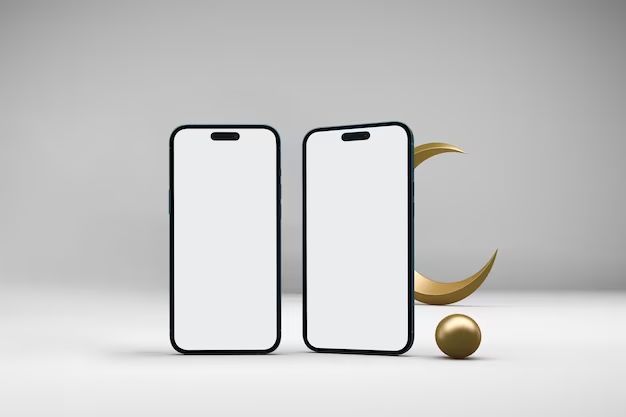Cell phones contain small amounts of precious metals like gold, silver, and copper. These metals are used in the circuit boards, wiring, and other components that make up a cell phone. As consumers upgrade their phones frequently, there is an opportunity to recover and recycle these metals from old cell phones that are discarded. So how much gold can actually be recovered from a typical cell phone? Let’s take a closer look.
Breakdown of Metals in a Cell Phone
The amount of gold in a cell phone varies depending on the model and year it was made. Here is a rough breakdown of the typical metal composition of a cell phone:
| Metal | Amount |
|---|---|
| Gold | 0.034 grams |
| Silver | 0.35 grams |
| Copper | 30 grams |
As you can see, there are small amounts of precious metals like gold and silver, along with more significant amounts of copper. The gold content ranges from 0.02 grams to 0.05 grams for most cell phones.
Newer smartphone models tend to have less gold than older feature phones. This is because smartphone manufacturers have optimized their circuit boards to use less precious metals in order to reduce costs. However, some high-end smartphones still have up to 0.15 grams of gold.
Cell Phone Recycling Process
Recovering the metals from cell phones requires mechanically breaking down the phones first to separate out the metal components. Here is a brief overview of the recycling process:
1. Cell phones are collected from consumers or businesses.
2. Phones are sorted by model and type.
3. Any damage like broken screens is repaired if possible.
4. Batteries and toxic components like mercury are safely removed and disposed of.
5. Phones are mechanically shredded into small pieces using shredders or hammers.
6. Shredded material passes through a series of screens, magnets, and water baths to separate different metal constituents.
7. Precious metals like gold and silver are separated using chemical leaching processes.
It requires advanced mechanical separation and chemical processes to extract the tiny amounts of precious metals from all the other materials in a cell phone.
Amount of Gold Recovered
Once the gold has been separated from the other metals during the recycling process, how much actual gold can be recovered from a single phone?
Let’s assume the phone contains 0.03 grams of gold. Given that one gram of gold is equivalent to $57.65 (at a market price of $1800 per troy ounce), 0.03 grams would be worth approximately $1.73.
To determine how many phones would be needed to accumulate one full gram of gold, we calculate:
1 gram / 0.03 grams per phone = 33.3 phones
This means you would need around 33 cell phones to end up with one gram of gold.
One full troy ounce is equivalent to 31.1 grams. So to accumulate one troy ounce of gold, which is worth about $1800, you would need:
31.1 grams / 0.03 grams per phone = 1037 phones
Therefore, to get a standard one ounce bar of gold, you would need to recycle over one thousand cell phones!
Value of Metals in a Cell Phone
Here is a summary of the typical value of metals found in a single cell phone:
| Metal | Amount | Value |
|---|---|---|
| Gold | 0.03 grams | $1.73 |
| Silver | 0.35 grams | $0.20 |
| Copper | 30 grams | $0.60 |
While the gold has the highest per gram value, copper makes up the biggest percentage of metal by weight in a phone.
Recycling one million phones would yield approximately:
– 30 kg of gold = $1.73 million
– 350 kg of silver = $200,000
– 30,000 kg of copper = $600,000
So you can see that recovering the metals, particularly the gold and copper, from cell phones can quickly add up in value!
Challenges of Cell Phone Recycling
While recycling cell phone metals represents an opportunity, there are some challenges in extracting these materials:
– Labor costs for collection and mechanical processing can eat into profits. It takes time to collect, sort, and dismantle cell phones.
– Advanced equipment is required for shredding and separation. Setting up recycling plants requires major capital investments.
– Low yields of precious metals means high volume is needed. Economies of scale are necessary to earn significant returns.
– Toxic components require safe disposal. Batteries, screens, and mercury-containing parts have to be carefully handled.
– Recycling rates remain low. Not all consumers know they can recycle old cell phones, limiting the supply.
Despite these hurdles, e-waste recycling is expected to grow as an industry. More efficient methods and better consumer education could boost recycling rates in the future.
Conclusion
While cell phones contain relatively small amounts of precious metals like gold, silver, and copper, the high number of phones discarded globally represents a significant opportunity for metal recovery and recycling. Approximately 0.03 grams of gold can be extracted from an average phone, and it takes over one thousand phones to accumulate one troy ounce of gold. With costs decreasing and methods improving for e-waste recycling, reclaiming metals from cell phones and other electronics could become more economically viable in the future. This will reduce the waste going into landfills and recover valuable resources.

